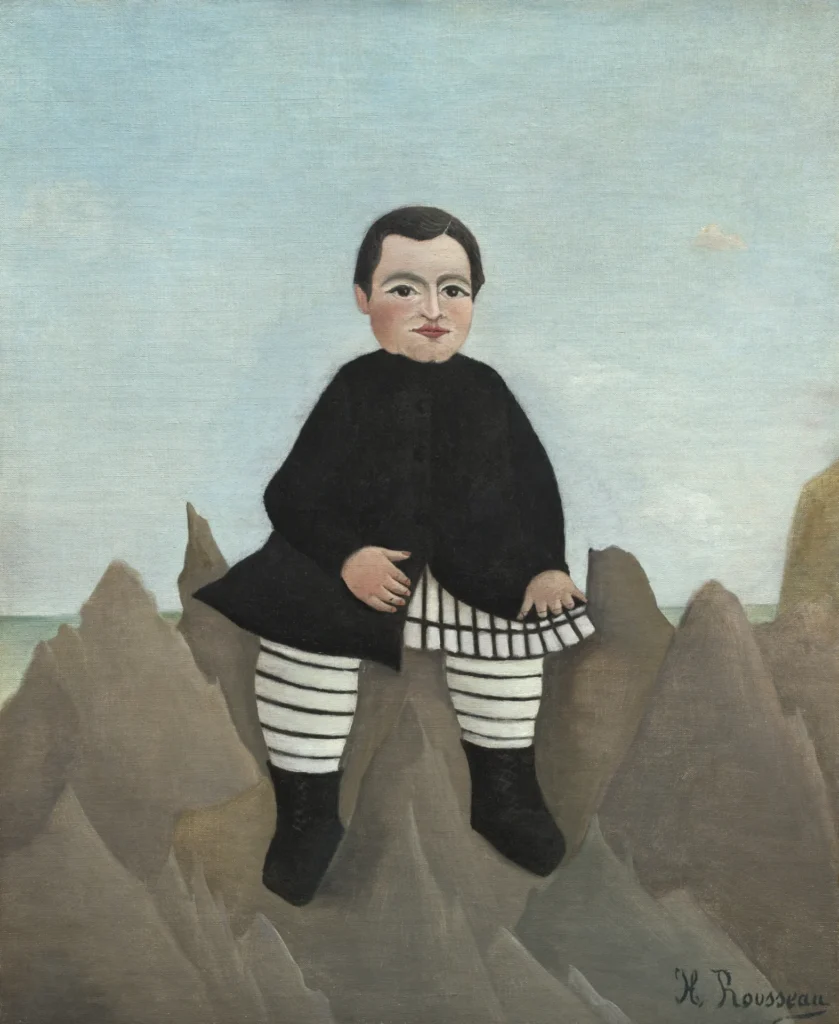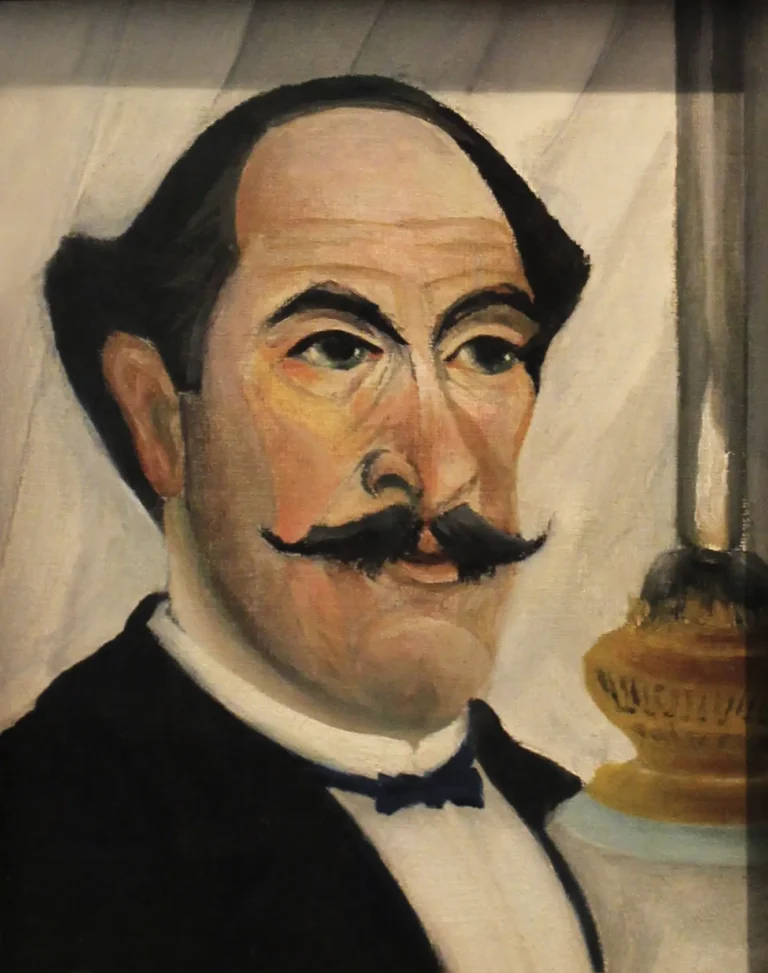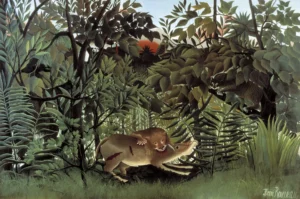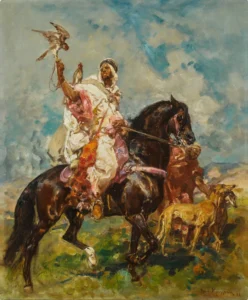Boy on the Rocks (1895-1897)
Henri Rousseau's Boy on the Rocks is an intriguing portrait painted in oil on canvas between 1895 and 1897. It embodies the Naïve Art movement, showcasing a young boy donned in a black cloak and striped pants, seated among jagged rocks under a serene blue sky. The artwork is remarkable for its flat perspective and vibrant colors, which contribute to its childlike quality. Known for its mysterious and poetic essence, this piece invites viewers into a world that balances innocence and surrealism.
1895 - 1897
About the Artwork
Created by the French painter Henri Rousseau, Boy on the Rocks reflects the artist's unique style marked by simplicity and a naive sensibility. Rousseau, who was largely self-taught, employed techniques that ignore traditional perspectives, resulting in a flat composition where every element carries equal weight in scale. The painting is a captivating portrayal of a young boy immersed in contemplation, evoking feelings of innocence and curiosity. Acquired by Chester Dale in 1927, it later became part of the National Gallery of Art’s collection, securing its place in the annals of art history.
Did You Know
Henri Rousseau, largely self-taught, developed his distinct style that drew from his experiences in Paris and his fascination with exotic subjects, despite never having traveled outside France.
Boy on the Rocks is emblematic of Rousseau’s naive technique, where traditional rules of perspective are intentionally disregarded, adding an enchanting flatness to the work.
Henri Rousseau’s work was initially met with skepticism, but over time, Boy on the Rocks has been embraced as a vital contribution to the Naïve Art movement, influencing artists worldwide.










